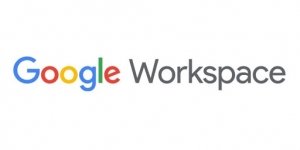Technology Solutions for Solopreneurs and VSBs
Technology Solutions for Solopreneurs
Entrepreneurs are a unique breed. Solo entrepreneurs, solopreneurs, even more so.
If you are a solopreneur, or lead a very small business, you face some unique business and IT challenges. One of these challenges is balancing your business and your personal lives. To do this, you want and need your technology solutions to save you time and energy.
If you are like most solopreneurs and very small business owners, you are probably
- Paying for duplicate services
- Unware of features that can improve your productivity
- Not taking time to explore ways to work more efficiently
- Missing security and data protections
- Not getting the guidance and support you need
At the same time, you most likely lack the time, energy, or expertise to research, select, deploy, and learn the right IT services. As a part of our managed cloud services, we offer technology solutions, tools, and apps for solopreneurs that are tailored to meet your specific business needs.
Managed Services are a Technology Solutions for Small Businesses
Often used by larger businesses, managed services provide your information technologies, support, and services as a comprehensive bundle for a set monthly or annual fee. By definition, managed services are designed to offload your IT responsibilities and place them in the hands of experts. These managed service providers should start with guidance, get your systems up and running, administer your services, and provide you with support. If they are performing their services well, these technology solutions for small business and solopreneurs should also help you identify features and functions that improve your work processes — make you more efficient.
5 Ways How to Move Towards Managed Services as a Technology Solution
Before moving forward with managed services, we recommend taking a step back and assessing how you want your IT services to help you and your business.
1. Start with A Goal and Objectives
- Your technology and services need to empower you and enable your business. Regardless of the devices, applications, and tools they use, your IT should:
- Be easy to use
- Save you time
- Secure your data, and that of your customers
- Keep your business data private
- Support any compliance requirements you may have
- Fit within your budget.
2. Focus on the Benefits
- Discuss which capabilities will help you work more efficiently, more productively
- Avoid the technology trap. Instead of thinking, for example, about email, calendars, and file sharing, think about automating appointment scheduling, protections for confidential information, and one-click video conferencing.
3. Define Your Baseline Services
- Map your benefits to technologies
- Base your IT decisions on your prioritized needs and wants
- Define the minimum set communications, collaboration, and security tools to run your business
- Explore and leverage ways to work more efficiently
4. Add / Enhance as Needed
- If your business must be compliant with legal or industry regulation, add the technologies and services you need to meet these requirements.
- If you find ways that technology can improve productivity, determine if the gains are worth the investment.
5. Managed Cloud Services
As the name implies, Managed Cloud Services are managed service that, whenever practical, leverage cloud services and solutions. Cumulus Global has the expertise and experience to move your business to managed cloud services. By leveraging cloud solutions, baseline services and foundational security are affordable and can easily be tailored to meet specific business needs.
Learn More About Our Technology Solutions, Tools, and Apps for Solopreneurs and Small Business
To learn more about our IT solutions that are tailored to meet your specific business needs, get in touch or view our additional resources below.
- View our eBook, IT Services for Solopreneurs and VSBs
- Schedule time with one of our Cloud Advisors
- Resources for Small Businesses and Solopreneurs
- Apps for Solopreneurs

 When Google announced the transition from G Suite to Google Workspace in October 2020, the deadline for transitioning was left open. This is no longer the case.
When Google announced the transition from G Suite to Google Workspace in October 2020, the deadline for transitioning was left open. This is no longer the case.